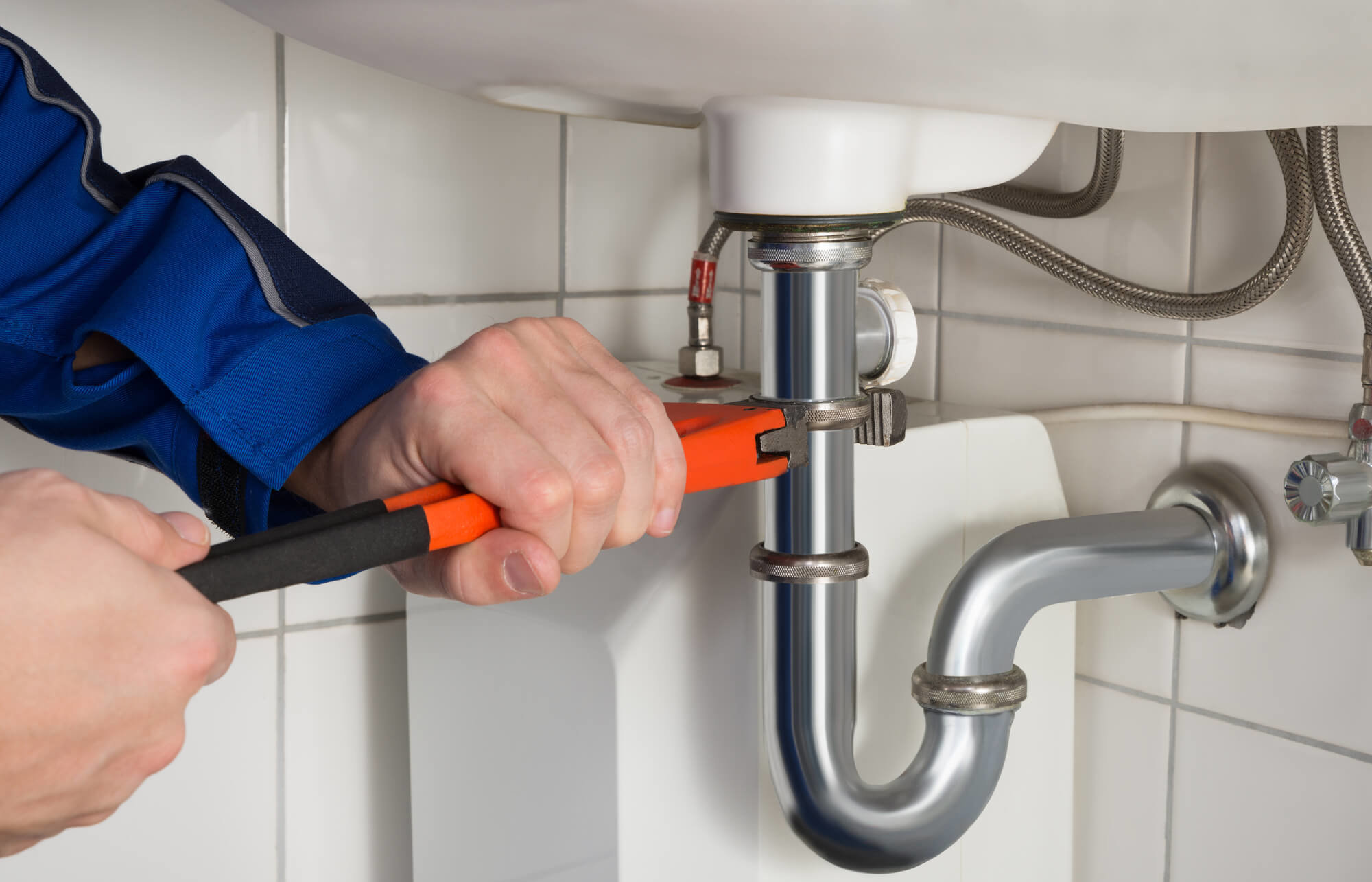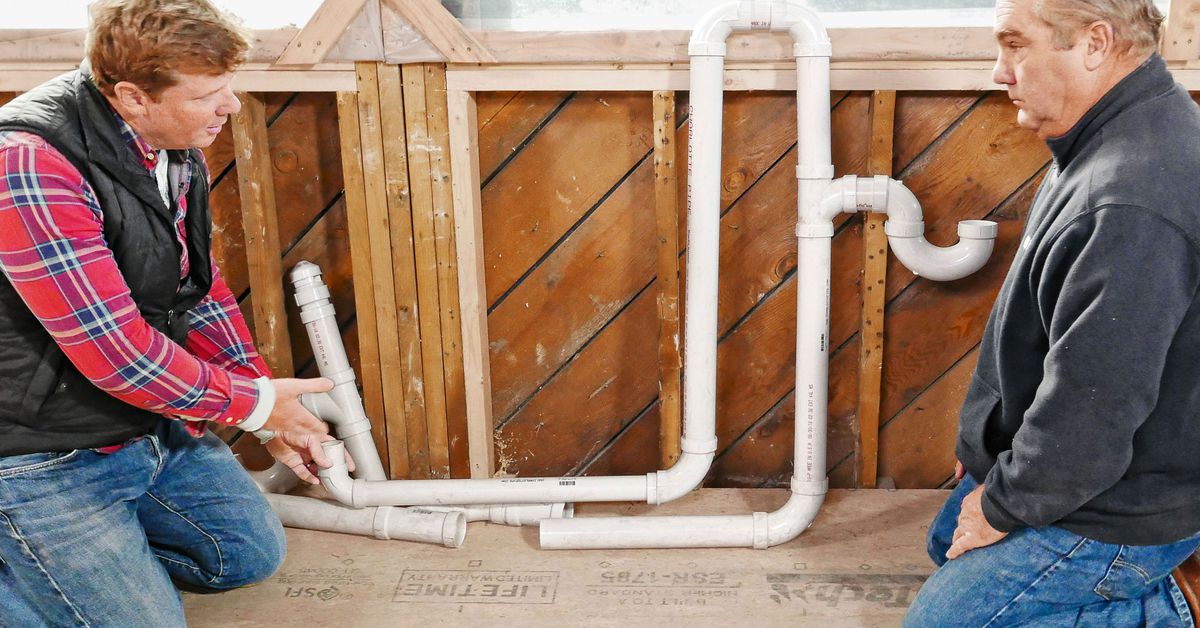Plumbing Sounds You Ought To Learn about
Plumbing Sounds You Ought To Learn about
Blog Article
Just about everyone maintains their personal perception about Why Your Water Pipes Are Noisy and How To Shut Them Up.

To diagnose noisy plumbing, it is important to figure out first whether the undesirable audios happen on the system's inlet side-in other words, when water is transformed on-or on the drainpipe side. Noises on the inlet side have actually varied causes: too much water pressure, used valve and also faucet components, improperly linked pumps or various other appliances, improperly placed pipeline fasteners, and also plumbing runs containing a lot of tight bends or other constraints. Noises on the drainpipe side usually come from inadequate place or, similar to some inlet side noise, a design consisting of tight bends.
Hissing
Hissing noise that takes place when a faucet is opened somewhat usually signals too much water pressure. Consult your regional public utility if you suspect this trouble; it will be able to inform you the water stress in your area as well as can set up a pressurereducing shutoff on the incoming supply of water pipeline if essential.
Other Inlet Side Noises
Creaking, squealing, damaging, snapping, and touching generally are caused by the growth or contraction of pipelines, generally copper ones supplying warm water. The audios occur as the pipes slide against loose fasteners or strike close-by residence framing. You can frequently pinpoint the area of the problem if the pipes are subjected; just comply with the audio when the pipelines are making sounds. Most likely you will discover a loosened pipeline hanger or a location where pipelines exist so near flooring joists or other framing pieces that they clatter against them. Connecting foam pipeline insulation around the pipes at the point of get in touch with ought to correct the issue. Make certain bands and also wall mounts are safe and secure and give appropriate support. Where feasible, pipeline bolts need to be affixed to substantial architectural aspects such as structure wall surfaces rather than to mounting; doing so reduces the transmission of vibrations from plumbing to surfaces that can enhance and transfer them. If affixing bolts to framework is inescapable, cover pipelines with insulation or other durable product where they speak to bolts, as well as sandwich the ends of new bolts in between rubber washing machines when installing them.
Fixing plumbing runs that suffer from flow-restricting limited or many bends is a last hope that ought to be carried out only after consulting a skilled plumbing service provider. Unfortunately, this scenario is rather typical in older houses that may not have actually been developed with interior plumbing or that have actually seen several remodels, specifically by novices.
Chattering or Shrilling
Intense chattering or screeching that takes place when a shutoff or faucet is activated, which typically disappears when the installation is opened fully, signals loosened or faulty internal components. The option is to replace the shutoff or faucet with a new one.
Pumps and also home appliances such as cleaning devices as well as dishwashers can move motor sound to pipes if they are poorly linked. Link such products to plumbing with plastic or rubber hoses-never rigid pipe-to isolate them.
Drain Noise
On the drainpipe side of plumbing, the chief objectives are to eliminate surface areas that can be struck by falling or hurrying water and to shield pipes to have inevitable audios.
In new building, bath tubs, shower stalls, commodes, and wallmounted sinks and also basins must be set on or against durable underlayments to lower the transmission of noise via them. Water-saving bathrooms and also faucets are much less noisy than traditional versions; install them as opposed to older types even if codes in your location still allow utilizing older components.
Drainpipes that do not run up and down to the basement or that branch right into horizontal pipeline runs sustained at floor joists or other mounting present especially frustrating noise issues. Such pipelines are large enough to emit considerable vibration; they additionally carry considerable quantities of water, which makes the circumstance even worse. In new building, specify cast-iron dirt pipes (the huge pipes that drain pipes commodes) if you can afford them. Their massiveness has much of the noise made by water travelling through them. Also, avoid directing drains in walls shared with bed rooms and also areas where individuals gather. Walls consisting of drains must be soundproofed as was defined earlier, using double panels of sound-insulating fiberboard as well as wallboard. Pipelines themselves can be covered with unique fiberglass insulation created the purpose; such pipes have an invulnerable plastic skin (occasionally containing lead). Results are not always adequate.
Thudding
Thudding sound, usually accompanied by shivering pipes, when a faucet or appliance valve is shut off is a problem called water hammer. The noise as well as resonance are triggered by the resounding wave of stress in the water, which all of a sudden has no location to go. Often opening up a shutoff that releases water rapidly into a section of piping including a limitation, arm joint, or tee fitting can produce the same condition.
Water hammer can usually be cured by installing fittings called air chambers or shock absorbers in the plumbing to which the problem shutoffs or taps are attached. These tools permit the shock wave developed by the halted circulation of water to dissipate airborne they include, which (unlike water) is compressible.
Older plumbing systems may have short vertical areas of capped pipeline behind wall surfaces on tap competes the exact same function; these can eventually fill with water, lowering or damaging their efficiency. The remedy is to drain the water system entirely by shutting down the major water system valve and opening up all faucets. Then open up the primary supply shutoff and also close the taps individually, beginning with the faucet nearest the valve and also finishing with the one farthest away.
If Your Plumbing is Making These Sounds, There’s a Problem
A Bang or Thump When You Turn Off a Faucet
If a loud bang or thump greets you each time your turn off running water, you likely have a water hammer. A water hammer occurs when the water velocity is brought to a halt, sending a shock wave through the pipe. It can be pretty jarring — even worse, damaging to your plumbing system. All that thudding could loosen connections.
Strange Toilet Noises
You’re so familiar with the sounds your toilet makes that your ears will be attuned to anything out of the ordinary. Fortunately, most unusual toilet noises can be narrowed down to just one of several problems.
Foghorn sound:
Open the toilet tank Flush the toilet When you hear the foghorn noise, lift the float to the top of the tank If you’re ambitious, you can remove the ballcock valve and disassemble it to replace the washer. Or you can more easily replace the ballcock valve entirely. This device is relatively inexpensive and available at most any hardware store.
Persistent hissing:
The hissing following a flush is the sound of the tank filling. It should stop once the tank is full. But if the hissing continues, it’s likely because water is leaking out of the tank. The rubber flap at the bottom of the tank can degrade, letting water slip through and into the bowl. That’s why the tank is refilling continuously. Fortunately, this is an easy fix:
Cut the water to the toilet by closing the shutoff valve on the water supply line. Flush the toilet to drain the tank. Disconnect the flapper Attach the new flapper Gurgling or bubbling:
Gurgling or bubbling suggests negative air pressure in the drain line, likely resulting from a clog. As air releases, it causes the water in the toilet to bubble. This could either be a minor issue or a major one, depending on the clog’s severity. Clogs can be caused by toilet paper or more stubborn obstructions such as tree roots. If you can’t work out the clog with a plunger, contact a professional plumber for assistance because a clog of this magnitude could lead to filthy and unsanitary sewage backups in your sink bathtub.

Hopefully you liked our excerpt on How To Fix Noisy Pipes. Thank you so much for taking the time to read through our piece of content. Sharing is nice. One never knows, you could be helping someone out. Thanks for your time. Don't hesitate to check our site back soon.
Go Services Report this page